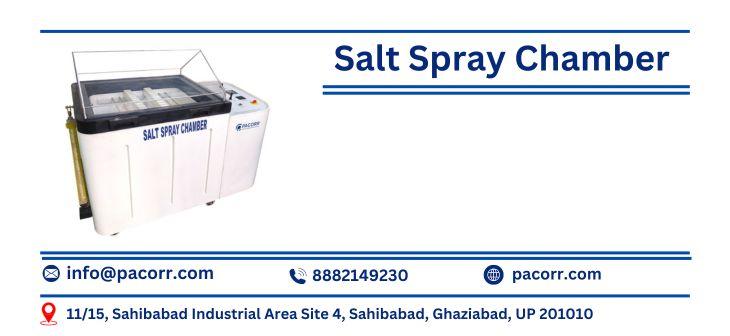Introduction
In the world of material testing, Salt Spray Chamber play a crucial role in assessing the corrosion resistance of products. Whether you are in the automotive, aerospace, or manufacturing industry, understanding the importance and functionality of these chambers is essential. This article delves into the specifics of Salt Spray Chamber, their applications, and how they contribute to quality assurance in various industries.
What is a Salt Spray Chamber?
A Salt Spray Chamber Price, also known as a salt fog chamber, is a controlled environment designed to simulate corrosive conditions. These chambers are used to test the corrosion resistance of materials, coatings, and finished products by exposing them to a saline mist at elevated temperatures. The primary objective is to accelerate the corrosion process, providing valuable data on how a product will withstand harsh environments over time.
Key Features of Salt Spray Chamber
Corrosion Simulation: These chambers create a saline mist that mimics coastal or industrial environments, allowing for accelerated corrosion testing.
Temperature Control: Precise temperature regulation is crucial for consistent and accurate test results.
Material Compatibility: Chambers are designed to test a wide range of materials, including metals, plastics, and coatings.
Adjustable Test Duration: Users can set test durations to meet specific industry standards or project requirements.
Applications of Salt Spray Chamber
Automotive Industry: Testing the corrosion resistance of car parts, including body panels, exhaust systems, and undercarriages.
Aerospace Industry: Ensuring that aircraft components can withstand extreme environmental conditions.
Marine Industry: Evaluating the durability of materials and coatings used in ships and offshore structures.
Manufacturing: Assessing the longevity and reliability of various products exposed to corrosive environments.
Benefits of Using Salt Spray Chamber
Accelerated Testing: Provides quick results, allowing manufacturers to make informed decisions about material selection and product design.
Quality Assurance: Helps in maintaining high-quality standards by identifying potential corrosion issues before products reach the market.
Compliance: Ensures products meet industry-specific standards and regulations regarding corrosion resistance.
Choosing the Right Salt Spray Chamber for Your Needs
When selecting a Salt Spray Test Chamber, consider the following factors:
Chamber Size: Depending on the size of the samples you need to test, choose a chamber that accommodates your requirements.
Test Standards: Ensure the chamber meets industry standards such as ASTM B117, ISO 9227, and others relevant to your field.
Ease of Use: Look for user-friendly controls and software that facilitate easy setup and monitoring of tests.
Maintenance: Opt for chambers that are easy to clean and maintain, ensuring long-term reliability and performance.
Maintenance and Best Practices
To ensure the longevity and accuracy of your Salt Spray Chamber, follow these best practices:
Regular Cleaning: Prevent buildup of salt deposits by cleaning the chamber and its components regularly.
Calibration: Periodically calibrate the chamber to maintain accurate test conditions.
Monitoring: Continuously monitor test parameters to ensure consistency and reliability of results.
Documentation: Keep detailed records of all tests, maintenance activities, and calibrations for future reference.
Conclusion
Salt Spray Chamber are indispensable tools in the field of corrosion testing. By simulating real-world corrosive environments, they provide critical insights into the durability and longevity of materials and products. Investing in a high-quality Corrosion Test Chamber and adhering to best practices ensures that your products meet the highest standards of quality and reliability. At pacorr.com, we offer a range of advanced Salt Spray Chamber designed to meet the diverse needs of various industries. Explore our selection to find the perfect solution for your corrosion testing requirements.



